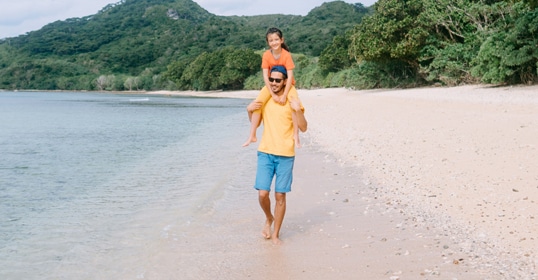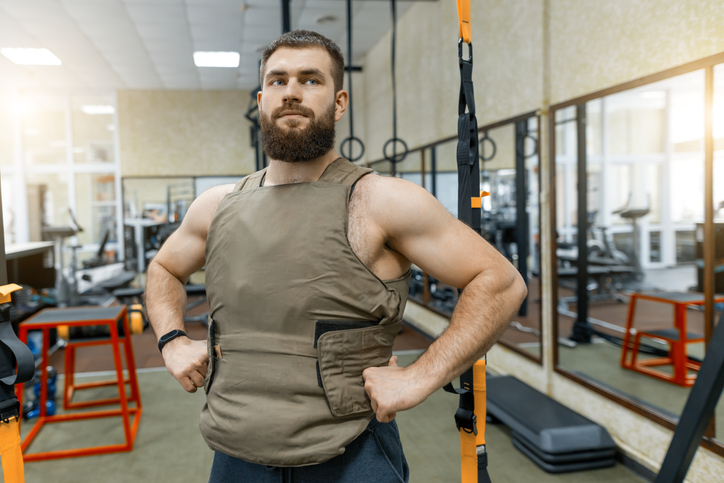This holiday season many of us will be eating large meals and spending time with family watching our favorite sporting events. Another portion of us will start our New Year’s resolutions and make exercise and healthy eating a part of our daily lives. Either way, quite a few of us will discover over the next few months that our clothing doesn’t fit the way it used to. And whether those 34X34 jeans become too small or too large, the problem of ill fitting clothing needs to be addressed if for no other reason than a man’s britches shouldn’t fall down or tear around company.
The purpose of this article is to help you understand what to do when you gain or lose a considerable amount of weight and are faced with the issue of not having clothing that fits. The fact of the matter is weight transitions, whether planned or unplanned, can be expensive. Even a man with modest wardrobe needs can face being out quite a bit of money if he is forced to spend resources quickly because his clothing no longer fits. Hopefully this article opens your eyes as to what to look out for when shopping and what your full set of options are when confronted with this dilemma.
General Guidelines for Ensuring Your Wardrobe Can Accommodate Weight Fluctuations
- Own less clothing and make sure what you do own is highly interchangeable – Buy less, wear what you have more often, and purchase clothing that matches a wide variety of items in your wardrobe. This is perhaps the best advice I can give a man going through a weight transition. This simple rule saves you money because you buy less and get high mileage from what you have. Purchase clothing that is classic in style, simple in color and pattern, and timeless in cut. Your goal is not for people to remember what you wore, only that you looked great wearing it. I’ll reiterate this point because I see so many people do the complete opposite – they own 10+ pairs of jeans/trousers, 20+ shirts, 5+ pairs of shoes, and 2+ suits yet wear less than 20% of those items more than 80% of the time. The reason – most of the clothing mentioned matches only one item in the closet or was purchased on a whim because it was too good of a deal to pass up. If you expect to gain or lose weight, you can’t afford to recreate this wasteful wardrobe in another size.
- Avoid trendy clothing – you might be storing it for years – Whether you gain or lose weight, you’ll want to hold onto your old clothing for at least a year and preferably longer if you have the storage space. Some weight loss experts advocate getting rid of and even burning your “large” clothing after hitting certain weight loss goals. I personally feel this is wasteful especially if the clothing is timeless in style. Also, as many men can attest to, weight fluctuations happen multiple times over a man’s life; you may find a broken leg or too many broken promises to avoid that ever tempting Wendy’s Triple Stack Cheeseburger result in you having to pull out those large pants years later.
- Find a good tailor – A good tailor or seamstress is your friend – he or she can often help you fit into your old clothing despite a weight swing of 25lb or more. Experienced tailors can adjust jackets down two full sizes without incident at a cost significantly lower than buying a new jacket. Tailors are only limited by their skill, the amount of excess fabric in the garment, and the limit of the garment’s proportions.
- Lower quality fabric is fine in certain areas of your wardrobe – There are items in your wardrobe you can skimp on as your weight fluctuates. These items include dress shirts and trousers, the logic being these items can be covered by quality pieces such as a jacket, and they have the least amount of give and will have to be replaced first. However, once your size has stabilized for 6 months then invest in quality menswear with better fabric and build.
- Thrift, Borrow, or Ask – The key with thrifting is finding the time to look. I personally think the best deals can be found at Goodwill and Salvation Army stores located outside of the major cities, as less people are picking over a wide range of items. To thrift successfully you do need to be able to spot quality items that fit or can be altered to fit your frame. Another option is simply to ask your friends and family – know your measurements and sizes and put it out on Facebook and email. If you are losing weight, this is a great way to let people know about your progress and see if they happen to have something hanging in the closet or storage that can tide you over until you reach your weight goal.
Specific Men’s Clothing Tips – Weight Gain and Loss
Gaining Weight & Menswear
Shirts – The good news is that most men’s dress shirts are built to fit men with healthy midsections; the bad news is that if you actually bought shirts that fit you and are now gaining weight you’ll have little room to accommodate any new insulation around the midsection. Other areas you might experience weight gain are in the shoulders which will make the sleeves feel shorter, and the neck where you’ll be hard pressed to button the top button.
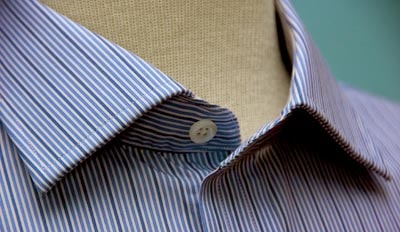
Adjust this collar by simply moving the button – if you need to remake it, then cut from the shirt tails as matching this complex pattern is next to impossible.
Addressing the collar issue, a collar button extender or moving the collar button ½ inch might temporarily offer relief. A more expensive option is to attach a new collar, which if white can be made and affixed by most tailors. If your shirt tails are long enough, another option is to have a new collar cut from them – the key being whether there is enough fabric present. As for dealing with sleeve length, a man could have longer cuffs cut and attached – this is limited though by proportions and usually anything more than ¾ of an inch is pushing it. As for the torso – you can’t create room where there isn’t any fabric. Some shirts might have a total of ¾ of an inch of room……but most won’t and so new shirts are called for.
Jackets – Of all the items we’ll discuss, a jacket has the most flexibility to handle weight gain. The simple reason is jackets are normally given 3 or more areas where excess fabric can be let out. It’s not uncommon for a man to have 2+ inches opened up on a jacket and it to still look fine proportionally. But make sure the fabric is there – many times men pick up a jacket at a thrift store and find out it has already been let out, or try to adjust a designer suit which has very little excess material left in. In addition, there are limits to what can be done based on proportion. As for the jacket shoulders, little if anything can be done to extend them although sleeves and the jacket back can be opened to help accommodate the new weight. Usually once a man expands past 1-2 sizes or 25-35lbs, the jacket cannot be worn. Finally pay attention to the front length of the jacket. A protruding belly can cause the jacket to rise considerably in the front, making the jacket un-wearable.
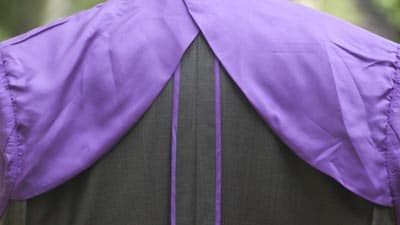
The fabric available for expansion can clearly be seen on this unlined jacket.
Trousers – Trousers are limited by the placement of their back pockets and the amount of excess material sewn into them. As a clothier I leave room for 2+ inches of expansion – most machine cut pants have almost nothing left over in the seams as fabric costs money. My advice is if your weight is fluctuating, be careful about spending too much money on pants. One trick I recommend is that if you have trousers made, skip the back pockets. This gives whoever will alter them in the future a lot more leeway in alterations. Also, although the current fashion is flat front trousers…..a man who enjoys food should wear and enjoy pleats. They keep the excess fabric out of the way when not in use but allow them to stretch out when needed. Lastly, large men are most comfortable in trousers that hang from their shoulders – consider suspenders.
Shoes – Often forgotten until the feet start to hurt, weight gain affects the size shoe you wear. Expect to wear your shoes harder and for your foot size to expand. You may need to go to a cobbler and have them professionally stretched.
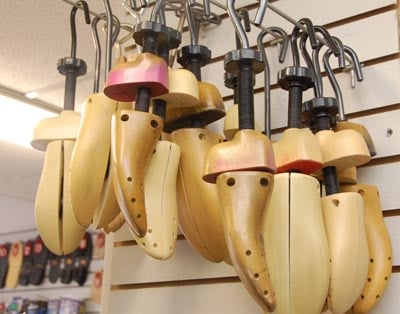
These devices can help stretch those shoes!
Losing Weight & Menswear
Shirts – You have a lot of options with adjusting shirts as you lose weight, but it’s important to remember most of these are permanent. The most drastic and complicated procedure is to re-cut the shirt – this can be done professionally by a trained shirt maker or not so professionally by an adventurous amateur sewer who is trying to save money. Which route you go depends on your budget and the quality of shirt you’ll be cutting on. Collars can be removed and re-cut as well, although you can quickly reduce the size by ½ inch by simply moving the collar button.
Jackets – Any jacket can be made smaller – the real issue is what you can reduce and adjust before the jacket falls out of proportion. Pockets, lapels, shoulders – all of these are made to a certain size. Adjusting the canvas that they rest on disturbs the balance, and going too far creates a garment that fits but just looks wrong. The most I recommend a jacket being altered is 2 sizes down, and even then that’s pushing it. I also need to comment on shoulder adjustment – the most common show stopper for jacket adjustment. Jacket shoulders on large men are often cut wide to accommodate their widest point (which is below the shoulder line). This causes problems when altering as the shoulders need to be reduced, which is a procedure only a custom jacket maker can attend to. The time/labor involved often makes it not worth it unless you paid 3K for the jacket.
Trousers – Like weight gain, the limiting factors here are the back pockets and the fact that bringing in the backside will move the pockets to the center…..not where they belong. Extra money can be spent bringing the trousers in on the sides, but this will double the cost of the alteration. Consider buying trousers with side straps or a built in elastic band. Also consider investing in a quality leather belt with removable buckle. As you lose weight you’ll be able to have a cobbler shorten it for 10 to 20 dollars. Suit Trouser Tip – As you approach your weight loss goals, and if you need to purchase a suit, an option is to purchase two sizes of trousers in the same fabric as your suit. Assuming you always dry clean the set together to ensure color matching/wear, you’ll have a suit that can meet weight swings of 25lb lb without having to have alterations.
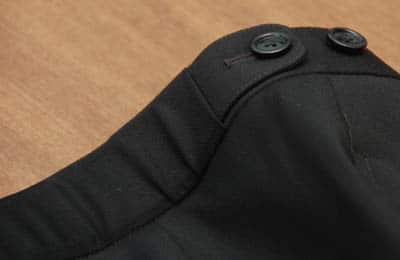
Side tabs can bring in a pair of trousers – or open them up.
Shoes – Your shoe size will decrease after a large weight loss – look for your feet to be thinner, and you’ll need to invest in new footwear as the stretched shoes you once wore cannot be made smaller. Wait until you are very close to your weight loss goal though, as you want to ensure your new size is true.
Conclusion
I know there are a lot of real world cases out there and ingenious solutions we didn’t mention – please share your stories and ask any questions in the comments. We love hearing from you!
Written by
Antonio Centeno
President, A Tailored Suit
Articles on Men’s Suits – Dress Shirts – Sport Jackets
Join our Facebook Page & Win Custom Clothing


